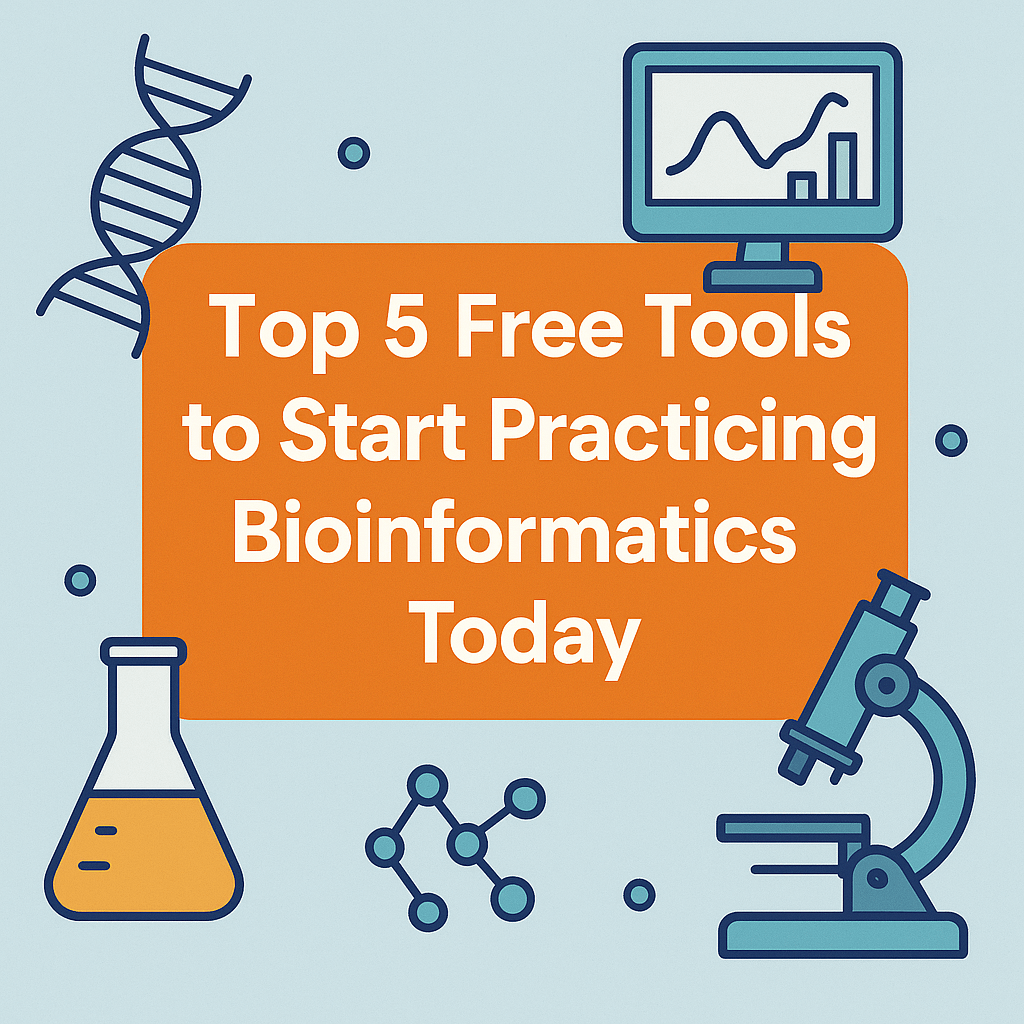Are you a student in biotechnology or life sciences and want to explore bioinformatics, but don’t know where to begin? Don’t worry, you’re not alone. A lot of students feel lost when it comes to practicing real bioinformatics. The good news? There are powerful tools out there that are free and beginner-friendly!

In this blog, we’ll explore 5 free tools that you can start using right away to build your skills in bioinformatics.
1. NCBI BLAST
Use it for: DNA and protein sequence comparison
BLAST (Basic Local Alignment Search Tool) is one of the most widely used tools in bioinformatics. It helps you compare a given DNA or protein sequence against a database of known sequences.
Why it’s great:
- No installation required
- Easy to use with a browser
- Gives you real scientific results fast
Try it here: https://blast.ncbi.nlm.nih.gov/Blast.cgi
2. ExPASy
Use it for: Protein analysis and visualization
ExPASy is a collection of tools that let you work with protein sequences, calculate their properties, and even model protein structures. Perfect for getting comfortable with protein bioinformatics.
Why it’s helpful:
- Simple interface
- Great for beginners
- No login or coding needed
3. Galaxy Project
Use it for: Building bioinformatics workflows (without coding)
Galaxy is an open-source, web-based platform that lets you do bioinformatics analysis with just clicks. You can analyze NGS data, align sequences, and run full workflows without any programming.
Why students love it:
- Drag-and-drop interface
- Used in real research
- 100% free and online
Explore Galaxy: https://usegalaxy.org/
4. Biopython (With Google Colab)
Use it for: Learning coding + bioinformatics
If you’re ready to start learning some code, Biopython is a great place to begin. It’s a library in Python made for biological computations. Pair it with Google Colab, and you won’t even need to install anything.
Why it’s beginner-friendly:
- Tons of examples online
- Works in your browser
- Free and open-source
5. UniProt
Use it for: Searching and understanding protein information
UniProt is a huge database full of detailed information about proteins. You can search for a protein by name, function, or ID and get tons of useful info, like structure, sequence, and interactions.
Why it’s useful:
- Very detailed but easy to search
- Used by scientists and students worldwide
- Free forever
Final Thoughts
Getting started in bioinformatics doesn’t have to be scary. These tools are free, beginner-friendly, and trusted by real researchers. You don’t need any coding skills to begin — just curiosity and consistency.
Start with one tool today and explore how fun bioinformatics can be!


Leave a Reply